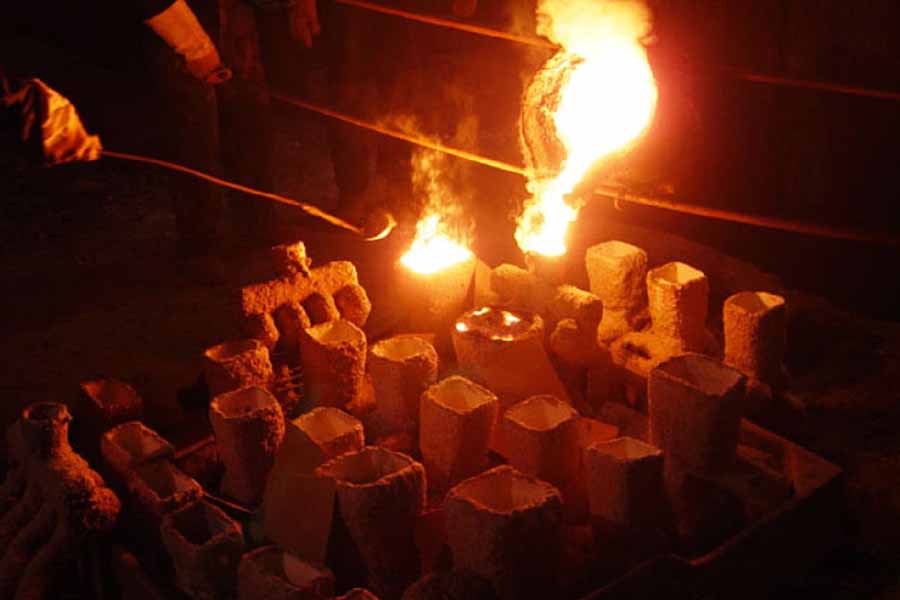In investment casting, the pouring of cast steel is an important step. The commonly used pouring method in investment casting is gravity pouring. The molten steel is poured from the furnace into the casting ladle, and then poured into the preheated shell. The molten steel cools quickly and oxidizes seriously, but this method is easy to operate. This is the most commonly used casting method in investment casting foundries.
Shell Pre-Heating
The de-waxed shell is naturally dried in the air for a period of time, and needs to be heated at a high temperature before pouring the liquid metal. For silica sol casting shells, the castings need to be heated up during firing and kept in a furnace at a temperature of about 950°C for 1 to 2 hours; for water glass casting shells, it can be heated with the furnace or at a furnace temperature of 400°C ~ 600°C put into the furnace, and then heated up to 800℃ ~ 850℃ holding for 1 to 2 hours.
The Purpose of Shell Pre-Heating
1) Remove the moisture, residual mold material and salt in the shell
2) Avoid gas generation during pouring, which is due to casting defects such as porosity and insufficient pouring in the casting
3) Improve the strength and permeability of the shell
4) Make the shell reach the proper temperature, so that the molten metal will not cool down quickly when pouring
Shell Temperature
Investment casting is hot casting, that is, the shell must be heated to a certain temperature before casting. The temperature of the shell should be high rather than low. If the temperature of the shell is too low, the steel castings are prone to defects such as cold barriers, inclusions, and pores. However, if the temperature of the shell is too high, the crystal grains of the steel castings will be coarse, and the mechanical properties of the steel castings will decrease.
Generally speaking, the temperature of the shell during pouring should be determined according to the structural characteristics of the steel casting. For small castings with a wall thickness of less than 5mm, the shell temperature is greater than 700°C; for medium-sized castings with a wall thickness of 5mm to 10mm, the shell temperature is 600°C to 700°C; for large castings with a wall thickness of more than 10mm, the shell temperature should be less than 500°C.
Pouring Temperature of Cast Steel
Pouring temperature refers to the temperature of molten steel before pouring. If the temperature of the molten steel is too low, the casting is difficult to form, and defects such as failure to pour, cold barrier, and casting inclusions are likely to occur. If the temperature of the molten steel during pouring is too high, it is good to the formation of steel castings. However, the crystal grains of the castings are coarse, deformation and shrinkage are easy to occur, and the tendency of decarburization increases. The pouring temperature of heavy-duty cast steel should be 50℃ ~ 80℃ higher than the alloy liquidus temperature.
Pouring Speed
If the casting speed of the steel castings is fast, it is conducive to the forming of the steel castings, but it is easy to be involved in bubbles and impurities. When pouring thicker castings or using bottom pouring system, the pouring speed can be fast and then slow to reduce the shrinkage of the casting. For thin-walled small parts, the pouring speed can be slow first and then fast to reduce defects such as pores and inclusions.

Investment Casting Foundry
 русский
русский



